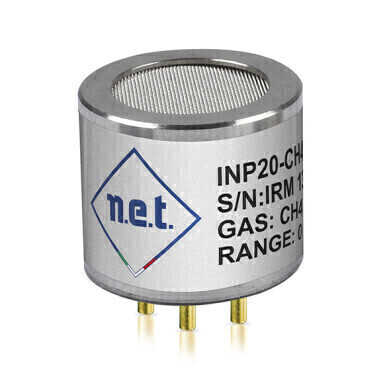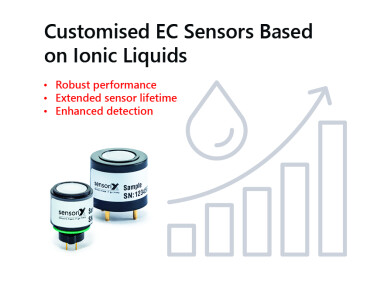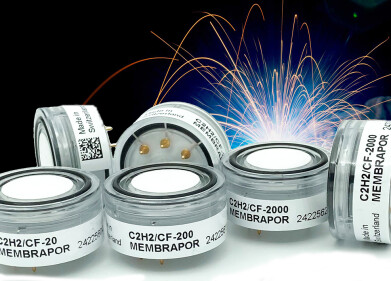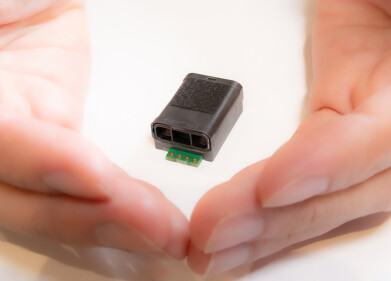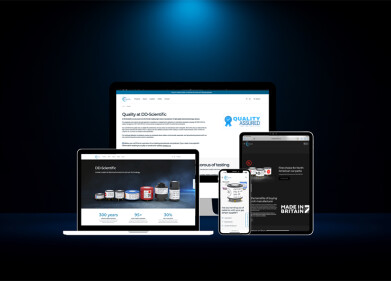Gas sensors
Harnessing the power of landfill gas and biogas with precise and dependable gas sensor technology
May 16 2023
Landfill gas (LFG) and biogas have emerged as crucial players in the quest for sustainable energy sources and environmental protection. While sharing similarities in their creation process and composition, these gases are both a valuable resource and a potential hazard. The key to maximising their potential and minimising the risk lies in effective monitoring and management, which can tip the balance between these two extremes.
When it comes to monitoring LFG and biogas, N.E.T.’s high-volume IRNET sensors provide the ideal solution. Designed specifically for these applications, these sensors possess remarkable features that make them a perfect fit. IRNET sensors offer a detection range of 0…100% for methane (CH4) and carbon dioxide (CO2) ensuring comprehensive monitoring of the gases involved. Constructed with rugged stainless steel and protective coatings, these sensors are resistant to acid gases typically associated with LFG and biogas applications. ATEX or IECEx-certified versions are available, ensuring maximum safety and usability in hazardous areas. The exclusive Dynamic Range technology guarantees optimal performance and unparalleled accuracy, enhancing the reliability of the monitoring systems.
Biogas can be produced from a variety of raw materials such as agricultural waste, manure, municipal waste, plant material, sewage, green waste, or food waste; LFG is generated by the anaerobic degradation of the organic fraction of solid urban waste within landfills. Both LFG and biogas primarily consist of methane (CH4) and carbon dioxide (CO2), which are greenhouse gases. They may also contain trace amounts of hydrogen sulphide (H2S), moisture, and other volatile organic compounds (VOCs).
By capturing biogas and LFG, the release of environmentally harmful compounds into the atmosphere can be avoided. Methane has over 25 times the global warming potential of carbon dioxide, making landfills the third-largest source of methane in the US. Given the toxicity and flammability of these gases, monitoring techniques have been developed to mitigate associated risks. Detectors are used to measure methane and CO2 levels, while surface and sub-surface monitoring and ambient air monitoring are conducted. In the US, large landfills are required to install gas collection and control systems, mandating the collection, and flaring of the gas at the very least.
Increasingly, instrument manufacturers across the industry are opting for N.E.T. sensors for continuous monitoring systems and safety-related detectors. Their reliability and precision make them a trusted choice in ensuring the safe and efficient use of LFG and biogas. LFG and biogas hold huge potential as renewable energy sources, but their management and monitoring are crucial for striking a balance between their benefits and risks. By employing advanced technologies like N.E.T. high-volume IRNET sensors, we can harness the power of these gases while safeguarding the environment and our communities.
Digital Edition
AET 28.4 Oct/Nov 2024
November 2024
Gas Detection - Go from lagging to leading: why investment in gas detection makes sense Air Monitoring - Swirl and vortex meters will aid green hydrogen production - Beyond the Stack: Emi...
View all digital editions
Events
Jan 12 2025 Abu Dhabi, UAE
Jan 14 2025 Abu Dhabi, UAE
Jan 20 2025 San Diego, CA, USA
Carrefour des Gestions Locales de L'eau
Jan 22 2025 Rennes, France
Safety, Health & Wellbeing LIVE
Jan 22 2025 Manchester, UK
